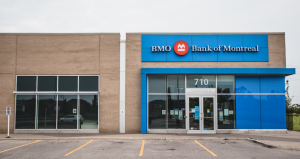If you have ever wondered whether you can overdraft your savings account, the answer is yes. It is possible for a savings account to be overdrafted. There can be several reasons for this to happen, and many of these have nothing to do with your intentions.

People often withdraw money from their bank accounts and forget it or even miss out on depositing money in their accounts. Such mistakes happen to the best of us every day. It is okay to make mistakes, but not when it leaves you with a negative balance.
Here is your step-by-step guide to managing the aftermath of overdrafting a savings account.
The Possibilities
An overdraft happens when the balance in your account is below zero. Can you overdraft your savings account? Now that this question has been answered with an assuring nod by SoFi, it is important to know what happens next.
It shows up as an issue either when you withdraw money from your account or when a check made against your savings permits the withdrawal of more money than you have in your banking account.
Once you have a negative balance, what happens next totally depends on the financial institution you are dealing with and the terms and conditions you have already agreed to. Here are some of the common possibilities you must consider.
Overdraft Fee
Many banks charge their clients an overdraft fee depending on the rules and regulations you may already have agreed to while opening your bank account. However, you can be protected if you have overdraft coverage.
It is always important to revisit the terms and conditions of the bank that you have an account with. Some banks even charge you an additional amount every day till the matter is resolved.
Declined Transaction
The financial institution may decline your transaction in case there is no overdraft protection for your account. Your transaction may not go through, and you will face a non-sufficient funds fee in this case.
Coverage from Linked Account
If your bank account has a linked account, it can be used to cover the cost. It happens when you overdraw a checking account. This way, the backup account will compensate for the main account even if the balance goes lower than zero.
Steps to Take
Once you have overdrawn your savings account, it is not possible to take a step back. You will end up with a negative balance that must be paid. Here is a step-by-step guide that can help you make the best of the situation.
Step 1: Deposit Your Funds
Once your savings account has been overdrafted, you cannot take it back. The first thing you must do is to deposit money in that account at the earliest. This way, you can save yourself from being charged with multiple overdraft fees and proceed with withdrawing. more money
Step 2: Get in Touch with the Bank
If you are a loyal customer of your bank, they will do everything in their power to ensure your satisfaction with their services. You can use this fact to your benefit to give them a call. You can request them to waive the fee. If you have a good standing till then, they may not charge you.
Step 3: Pay the Fee
Requesting your bank does not always work. Based on several factors, your bank can reject your request to have the fee waived. This may affect your credit score.
Step 4: Get in Touch with Payee
It is likely that your payment may not have gone through to your payee because of an overdraft. You must get in touch with them for confirmation and arrange alternative ways to settle the matter.




Leave a Reply